Do you have a question about the Canon MG6100 SERIES and is the answer not in the manual?
Guides users on diagnosing and resolving printer issues based on observed symptoms.
Addresses errors indicated by the Alarm LED and displayed on the LCD.
Details error codes and solutions related to cyclic blinking of Alarm and Power LEDs.
Lists key components for replacement and their corresponding adjustment/operation checks.
Provides step-by-step instructions for disassembling and replacing various machine parts.
Instructions for removing the outer housing, scanner unit, and document cover.
Steps for removing the operation panel and related components.
Procedure for removing the document window R.
Steps to unlock the carriage mechanism.
Instructions for removing the ASF (Auto Sheet Feeder) unit.
Detailed steps for removing the carriage unit.
Procedure for removing the spur unit and platen unit.
Instructions for removing the purge drive and switch system units.
Steps for reassembling the printer engine after repair.
Guides on connecting and routing various cables within the machine.
Procedure for replacing the ink absorber unit.
Details various adjustments and their purposes, methods, and approximate times.
Resets settings to initial values.
Sets the machine's regional destination.
Resets the ink absorber counter after replacement.
Sets the actual ink absorbed amount into the EEPROM.
Adjusts the paper feed motor to ensure proper belt tension.
Secures dot placement accuracy for print heads.
Secures dot placement accuracy for print heads when automatic fails.
Applies grease to sliding portions for smooth operation.
Checks ink tank presence and positioning functionality.
Sets the display language on the LCD.
Adjusts the position of the document pressure sheet for scanning accuracy.
Corrects paper feed and eject issues manually.
Sets the carriage rail to its original position.
Sets the center position for disc label printing.
Adjusts the sensitivity of the operation panel's capacitive sensors.
Describes adjustments and maintenance tasks that can be performed via the machine's operation panel.
Prints a pattern to check nozzle condition and identify print head issues.
Cleans print head nozzles to maintain print quality.
Performs deep cleaning for persistent print head issues.
Automates print head alignment for optimal print accuracy.
Performs print head alignment manually when automatic alignment fails.
Confirms the current print head alignment values.
Cleans paper feed rollers to improve paper feeding.
Cleans platen ribs to prevent smearing on the back of paper.
Outlines procedures for entering service mode and using the service tool.
Steps to enter service mode and operate the service tool.
Details the functionalities available within the Service Tool software.
Performs various test prints for diagnostics and verification.
Prints EEPROM data for inspection and troubleshooting.
Prints a nozzle check pattern to assess print head condition.
Performs integrated inspection pattern printing.
Saves EEPROM information to a computer.
Performs CD-R check pattern printing for calibration.
Prints patterns for LF/Eject correction.
Prints left margin patterns for adjustment.
Enables or disables automatic print head cleaning.
Performs deep cleaning of both Black and Color print heads.
Resets or sets the main ink absorber counter value.
Resets the platen ink absorber counter.
Initializes EEPROM settings.
Tests the functionality of all buttons and the LCD display segments.
Resets the serial number to zero.
Sets the destination country or region.
Corrects disc label print position.
Corrects LF/Eject values based on printed patterns.
Automates LF/Eject correction.
Adjusts left margin values.
Sets the ink absorber counter value.
Manages the wetting liquid counter.
Adjusts capacitive sensor sensitivity based on panel rank.
Performs individual scanner adjustments.
Detailed procedure for correcting LF/Eject issues using correction patterns.
Tests the functionality of all buttons and the LCD display segments.
Sets the ink absorber counter value after logic board replacement.
Corrects the disc label print position for accurate printing.
Adjusts the sensitivity of the operation panel's capacitive sensors.
Details specific points for applying grease to carriage rails and gear shafts.
Provides special notes and troubleshooting tips for common servicing issues.
Troubleshooting steps for print quality issues like smearing and non-ejection.
Procedure for adjusting the paper feed motor for proper belt tension.
Instructions for replacing the carriage unit.
Procedure for replacing the document pressure sheet.
Sets the ink absorber counter value after logic board replacement.
Guidelines for preventive ink absorber replacement based on life or counter value.
Outlines the standard steps to verify machine operation after repair.
Shows a sample of the integrated inspection pattern print.
Shows a sample printout of the ink absorber counter value.
Lists maintenance tasks for customers, including timing, purpose, tools, and time.
Lists special tools required for maintenance and their applications.
Details various sensors, their functions, and detectable problems. Includes: Scanner Open Sensor, FB Encoder Sensor, Inner Cover Sensor, LF Encoder Sensor, Eject Encoder Sensor, PE Sensor, ASF Cam Sensor, APP Encoder Sensor, Carriage Encoder, Temperature & Ink Amount Sensor, Ink Sensor, Valve Cam Sensor, Pump Roller Sensor, Purge Cam Sensor.
Shows where to find the serial number on the machine.
| Print Technology | Inkjet |
|---|---|
| Max Print Resolution | 9600 x 2400 dpi |
| Scanner Type | Flatbed |
| Connectivity | USB, Wi-Fi |
| Duplex Printing | Yes |
| Display | 3.0-inch LCD |
| Number of Ink Cartridges | 6 |
| Scanner Resolution | 2400 x 4800 dpi |
| Supported Media Sizes | A4, A5, B5, Letter, Legal |
| Functions | Print, Scan, Copy |
| Ink Cartridges | 1 x Canon CLI-226 Black, 1 x Canon CLI-226 Cyan, 1 x Canon CLI-226 Magenta, 1 x Canon CLI-226 Yellow |
| Dimensions (W x D x H) | 18.5 x 14.5 x 6.9 inches |
| Ink Cartridge Type | Individual ink tanks (PGBK, BK, C, M, Y, GY) |
| Print Speed (Color) | 9.3 ipm |

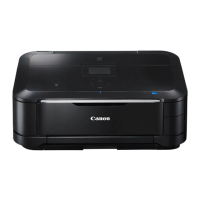

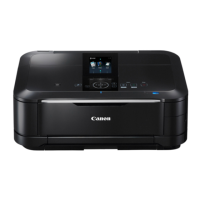
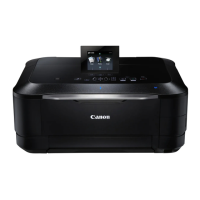
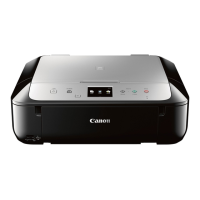
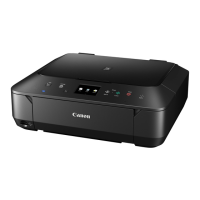
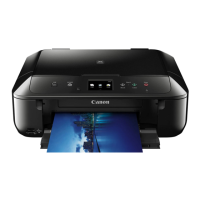
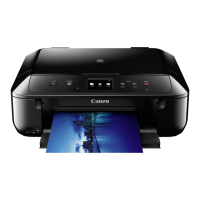


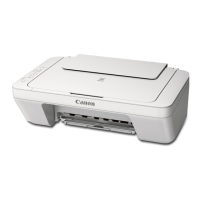
